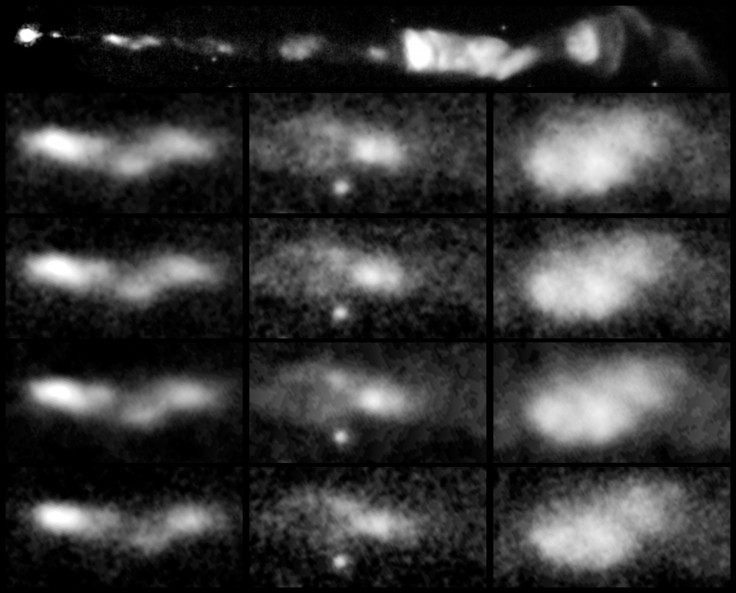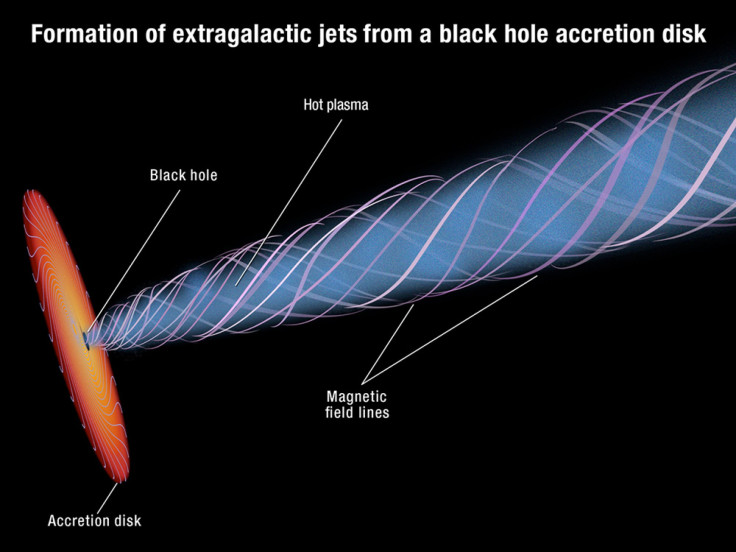Hubble Directs ‘Space Slinky’ Movie From 13 Years Of Footage Of Gas Being Ejected From A Black Hole [VIDEO]
The Hubble Space Telescope has spent more than 13 years observing a jet of gas being ejected from a black hole, providing enough footage to create a new film. Astronomers cobbled together hundreds of images to create a movie of the process, which plays an important role in the development of galaxies.

The Milky Way galaxy has a supermassive black hole at its center, Sagittarius A* (Sgr A*), and the astronomers say these black holes once had an active phase that could have spurred galaxy formation. In the new movie, a jet of gas resembling a Slinky is ejected by a black hole located in the M87 galaxy, located in the Virgo cluster of galaxies within the constellation Virgo, approximately 50 million light-years from Earth. M87 is a giant elliptical galaxy, and the supermassive black hole at its center has a mass that is several billion times that of the sun.
The time-lapse video of gas escaping M87’s supermassive black hole was made from 400 different images taken by Hubble between 1995 and 2008. The research was published in the Astrophysical Journal.
“Most of these black holes are believed to have gone through an active phase, and black hole-powered jets from this active phase play a key role in the evolution of galaxies,” said Eileen Meyer, from the Space Telescope Science Institute in Baltimore, in a statement. Meyer said supermassive black holes are vital to any massive galaxy like M87, and the Hubble observations could lead to new insights on black holes and the role of these jets in the formation of galaxies.

The video revealed a connection between the spiral motion of the jet to a helix-shaped (like DNA) magnetic field that surrounds the supermassive black hole. Researchers also discovered several gas clumps that move in odd patterns, including Knot B, which is moving in a zigzag pattern while other clumps move in a looping pattern. The "slinky" reference is due to the shape and motion patterns of the jet as it is being ejected by the supermassive black hole.
The researchers are cautiously excited about the jet’s behavior. Says Meyer, “We found things that move slowly. And we found things that are stationary. This study shows us that the clumps are very dynamic sources.” The physics and mechanisms within these jets of gas may be isolated to M87’s jet or could be common among ejected jets. Meyer says the team of researchers will use Hubble to observe three other jets to learn more about these objects and compare those results with those obtained from the observations of M87’s jet.
The Hubble video of M87's jet can be viewed below.
© Copyright IBTimes 2025. All rights reserved.






















